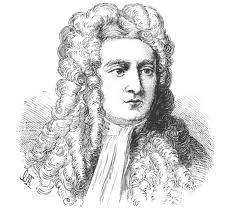April 4, 2017

Through the years, we’ve seen teaching trends come and go… but one thing hasn’t changed: students LOVE anything related to balloons and rockets. (So do we.) And when you’re talking about rockets, you’re talking about forces and motion!
Take a look at this free lesson on forces and motion. We’re using balloons as our rocket “engines” to power these simple cars. The activity is basic enough to work with younger students, and can easily be augmented for a more advanced group. This lesson invites all kinds of variations. You might say the sky’s the limit!
Click on the image below for a full-size, full-color PDF of this easy-to-implement forces and motion lesson. Enjoy!
Read the rest of this entry »
 1 Comment |
1 Comment |  College level, Elementary level, energy, High School level, Middle School level, Physics | Tagged: Educational Innovations, energy, force, force and motion, homeschool, kinetic energy, newton, Newton's First Law, Newton's Second Law, Newton's Third Law, parent friendly, PBL, PhBL, PhenoBL, phenomenon based learning, Physics, science, STEM |
College level, Elementary level, energy, High School level, Middle School level, Physics | Tagged: Educational Innovations, energy, force, force and motion, homeschool, kinetic energy, newton, Newton's First Law, Newton's Second Law, Newton's Third Law, parent friendly, PBL, PhBL, PhenoBL, phenomenon based learning, Physics, science, STEM |  Permalink
Permalink
 Posted by Donna Giachetti
Posted by Donna Giachetti
April 4, 2017
 Forces and motion are all around us. You might even say they make the world go ’round. In 1687 Isaac Newton attempted to explain the movements of everything in the universe—from a pea rolling on a plate to the position of the planets. It’s staggering to think about how much of our daily life involves some aspect of Newton’s Laws of Motion.
Forces and motion are all around us. You might even say they make the world go ’round. In 1687 Isaac Newton attempted to explain the movements of everything in the universe—from a pea rolling on a plate to the position of the planets. It’s staggering to think about how much of our daily life involves some aspect of Newton’s Laws of Motion.
This is one science topic that can be easily approached by using examples from our collective life experiences. Starting a discussion about forces and motion with your students is easy. All you have to do is drop a feather… nudge a toy car forward… pull open a door.
We’ve put together a collection of interesting topics and interactive games that you can use to get a conversation going with your students. Let us know what you think in the comments below!
Read the rest of this entry »
 Leave a Comment » |
Leave a Comment » |  College level, Elementary level, energy, High School level, Middle School level, Physics | Tagged: Educational Innovations, energy, force, force and motion, homeschool, kinetic energy, newton, Newton's First Law, Newton's Second Law, Newton's Third Law, parent friendly, PBL, PhBL, PhenoBL, phenomenon based learning, Physics, science, STEM |
College level, Elementary level, energy, High School level, Middle School level, Physics | Tagged: Educational Innovations, energy, force, force and motion, homeschool, kinetic energy, newton, Newton's First Law, Newton's Second Law, Newton's Third Law, parent friendly, PBL, PhBL, PhenoBL, phenomenon based learning, Physics, science, STEM |  Permalink
Permalink
 Posted by Donna Giachetti
Posted by Donna Giachetti
April 4, 2017
 No matter what grade you teach, at some point you will surely need to introduce your students to the three Laws of Motion developed by Sir Isaac Newton in 1687. His Philosophiae Naturalis Principia Mathematica took Newton two years to write and was the culmination of more than 20 years of thinking.
No matter what grade you teach, at some point you will surely need to introduce your students to the three Laws of Motion developed by Sir Isaac Newton in 1687. His Philosophiae Naturalis Principia Mathematica took Newton two years to write and was the culmination of more than 20 years of thinking.
That was more than 300 years ago. Today, we live in the YouTube era. Videos allow us to quickly summarize important scientific concepts like forces and motion in dramatic ways that your students will understand and remember. We’ve gathered some excellent examples here. Enjoy!
If you find a video on forces and motion that you’d like to share with us, please leave a comment!
Read the rest of this entry »
 Leave a Comment » |
Leave a Comment » |  College level, Elementary level, energy, High School level, Middle School level, Physics | Tagged: Educational Innovations, energy, force, force and motion, homeschool, kinetic energy, newton, Newton's First Law, Newton's Second Law, Newton's Third Law, parent friendly, PBL, PhBL, PhenoBL, phenomenon based learning, Physics, science, STEM |
College level, Elementary level, energy, High School level, Middle School level, Physics | Tagged: Educational Innovations, energy, force, force and motion, homeschool, kinetic energy, newton, Newton's First Law, Newton's Second Law, Newton's Third Law, parent friendly, PBL, PhBL, PhenoBL, phenomenon based learning, Physics, science, STEM |  Permalink
Permalink
 Posted by Donna Giachetti
Posted by Donna Giachetti
April 4, 2017
 You can’t talk about forces and motion without talking about Isaac Newton. His three Laws of Motion were published more than 300 years ago, and yet their basic concepts—inertia, acceleration, momentum, and mass—are still the standard for how we discuss forces and motion today. The laws may have been refined over the years (most famously by Einstein) but they still reign as incontrovertible scientific laws. We couldn’t send the Hubble Space Telescope into orbit without Newton.
You can’t talk about forces and motion without talking about Isaac Newton. His three Laws of Motion were published more than 300 years ago, and yet their basic concepts—inertia, acceleration, momentum, and mass—are still the standard for how we discuss forces and motion today. The laws may have been refined over the years (most famously by Einstein) but they still reign as incontrovertible scientific laws. We couldn’t send the Hubble Space Telescope into orbit without Newton.
While there may not be much NEW about Newton’s Laws, there is still plenty to say about how they affect the world around us. Read on for some interesting news reports related to forces and motion. Let us know if you find an article you’d like us to post!
Read the rest of this entry »
 Leave a Comment » |
Leave a Comment » |  College level, Elementary level, energy, High School level, Middle School level, Physics | Tagged: Educational Innovations, energy, force, force and motion, homeschool, kinetic energy, newton, Newton's First Law, Newton's Second Law, Newton's Third Law, parent friendly, PBL, PhBL, PhenoBL, phenomenon based learning, Physics, science, STEM |
College level, Elementary level, energy, High School level, Middle School level, Physics | Tagged: Educational Innovations, energy, force, force and motion, homeschool, kinetic energy, newton, Newton's First Law, Newton's Second Law, Newton's Third Law, parent friendly, PBL, PhBL, PhenoBL, phenomenon based learning, Physics, science, STEM |  Permalink
Permalink
 Posted by Donna Giachetti
Posted by Donna Giachetti
May 28, 2011
 by: Matthew Morris
by: Matthew Morris
Newton was a revolutionary thinker of his time. He is responsible for the three laws of motion that we still use today;
1. Objects that are not in motion remain stationary unless acted upon by another force.
2. There is a direct relationship between the force acted upon the object and the mass of that object times the acceleration the object feels (F=ma).
3. For every action there is an equal and opposite reaction.
 Nobody before Newton could explain why objects acted the way they did, but with these three laws he quantified movement in terms everyone could understand.
Nobody before Newton could explain why objects acted the way they did, but with these three laws he quantified movement in terms everyone could understand.
But there was a problem with his theory; if all motion had to be caused by some force acting on it, then why do objects fall towards the earth when you release them from a fixed position? This free falling object was in fact free, meaning free of outside forces acting upon it (besides wind resistance). There were no visible forces acting upon that object. So why do they move downward if nothing is acting on it? But Newton explained this motion with gravity. He said that gravity is a force that the earth has upon all objects, something invisible that pulls us down at all times at a constant acceleration. There is a myth that the way Newton thought of the idea of gravity was when he was thinking about it under an apple tree when an apple fell on Newton’s head and at that moment, he figured out that there must be a force pulling the object down. This is also why apples are used to demonstrate Newton’s force, but no one knows definitively if the myth is true or not. Read the rest of this entry »
 Leave a Comment » |
Leave a Comment » |  College level, Elementary level, experiments, High School level, Middle School level, Physics | Tagged: acceleration, awesome experiment, force and motion, gravity, Newton's Apple, PBL, phenomenon based learning, phenomenon-based science, science, Sir Isaac Newton, spacetime |
College level, Elementary level, experiments, High School level, Middle School level, Physics | Tagged: acceleration, awesome experiment, force and motion, gravity, Newton's Apple, PBL, phenomenon based learning, phenomenon-based science, science, Sir Isaac Newton, spacetime |  Permalink
Permalink
 Posted by Tami O'Connor
Posted by Tami O'Connor




 Posted by Donna Giachetti
Posted by Donna Giachetti  Forces and motion are all around us. You might even say they make the world go ’round. In 1687 Isaac Newton attempted to explain the movements of everything in the universe—from a pea rolling on a plate to the position of the planets. It’s staggering to think about how much of our daily life involves some aspect of Newton’s Laws of Motion.
Forces and motion are all around us. You might even say they make the world go ’round. In 1687 Isaac Newton attempted to explain the movements of everything in the universe—from a pea rolling on a plate to the position of the planets. It’s staggering to think about how much of our daily life involves some aspect of Newton’s Laws of Motion.
 You can’t talk about forces and motion without talking about Isaac Newton. His three Laws of Motion were published more than 300 years ago, and yet their basic concepts—inertia, acceleration, momentum, and mass—are still the standard for how we discuss forces and motion today. The laws may have been refined over the years (most famously by Einstein) but they still reign as incontrovertible scientific laws. We couldn’t send the Hubble Space Telescope into orbit without Newton.
You can’t talk about forces and motion without talking about Isaac Newton. His three Laws of Motion were published more than 300 years ago, and yet their basic concepts—inertia, acceleration, momentum, and mass—are still the standard for how we discuss forces and motion today. The laws may have been refined over the years (most famously by Einstein) but they still reign as incontrovertible scientific laws. We couldn’t send the Hubble Space Telescope into orbit without Newton.
